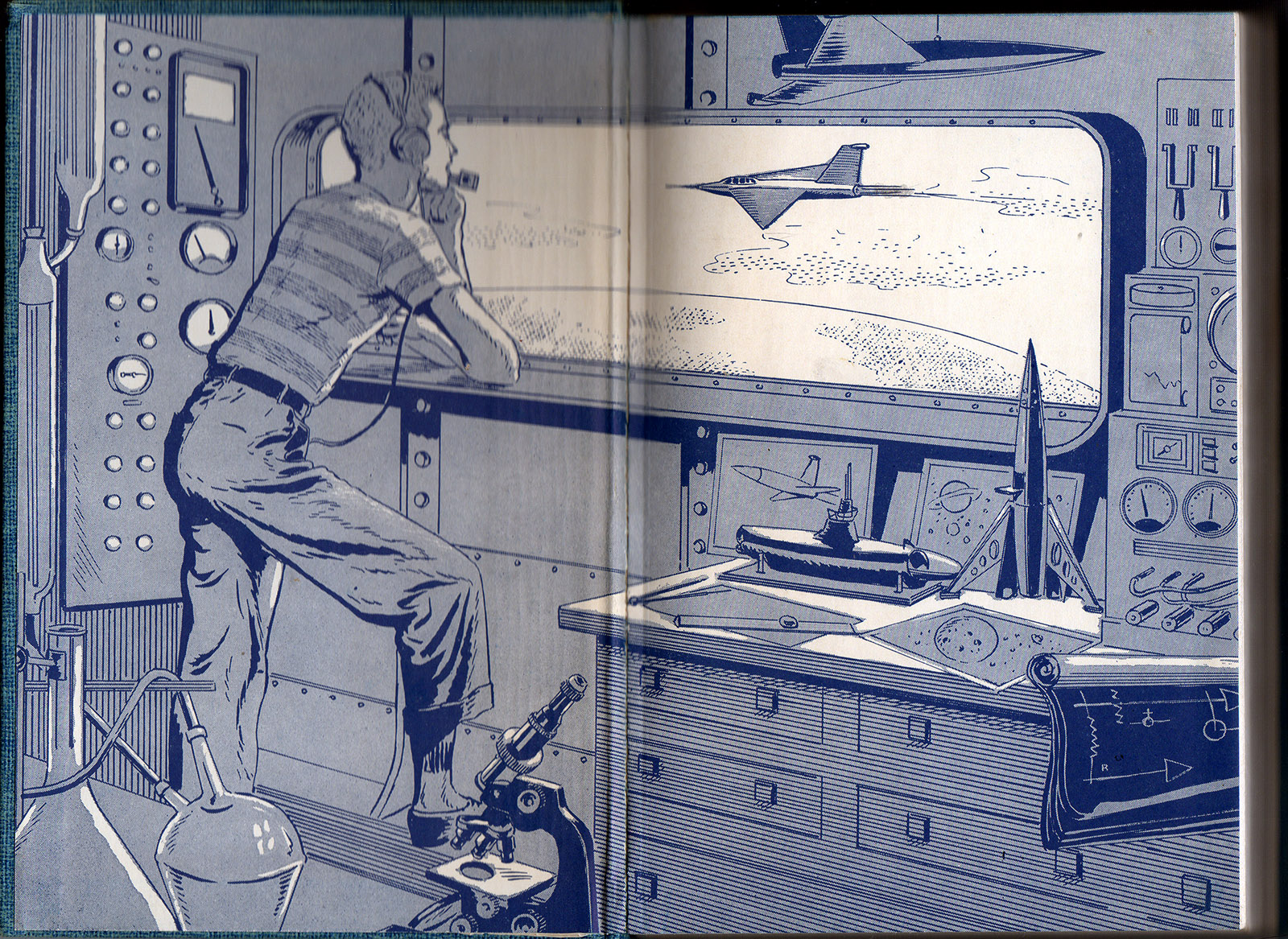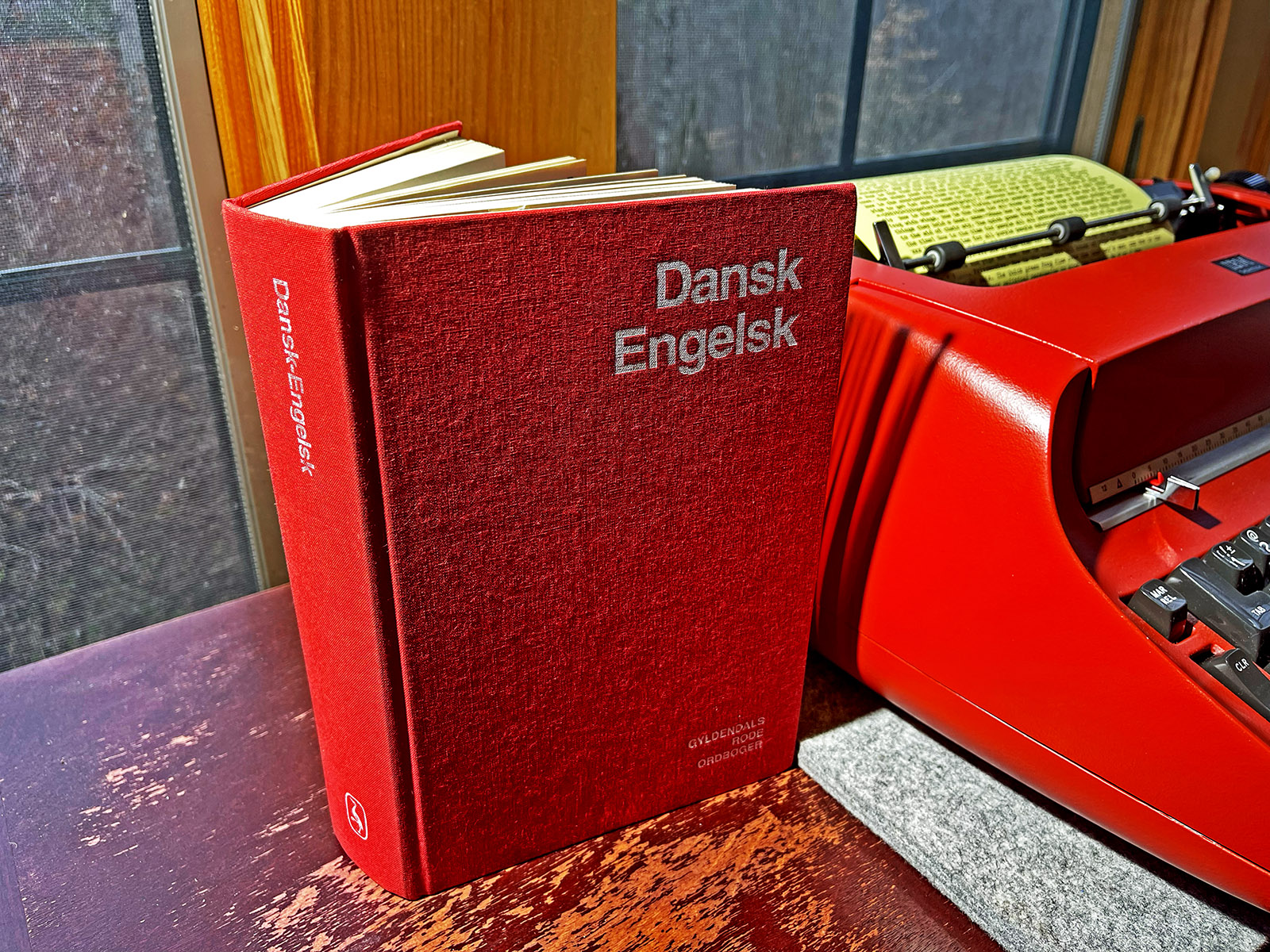
Starting in 1910, books in the Tom Swift series (written for teenagers) have sold more than 30 million copies, according to the Wikipedia article. And yet I don’t recall ever having seen a Tom Swift book in a (used) bookstore until yesterday. My brother had six or eight of the 1954 series, so when I saw the blue denim cover in the store I recognized it immediately as a Tom Swift book.
I also had no idea that the Tom Swift series of books continued until 2019. I can see on eBay that the older books are highly collectible. They’re inexpensive because there are so many copies extant. I’m not sentimental enough about the Tom Swift books to collect them. I read them, I think, when I was a little too young (eleven or twelve), and they didn’t make a great impression on me. Still, they’re classic nerd fiction, and, as the Wikipedia article points out, the books inspired several generations of engineers and scientists.

⬆︎ There actually was never an author named Victor Appleton. That was a pseudonym that the publisher used for multiple authors, some of whom were women. According to Wikipedia, the 1954 series were written by Harriet Adams, who was the daughter of Edward Stratemeyer, who originally conceived the Tom Swift series starting in 1910.
⬇︎ A Danish word we all should know

I love dictionaries, and I always check out dictionaries when shopping through used books. This Danish dictionary, because of its beautiful bright red cover, almost jumped off the shelf into my hands. I know exactly one word of Danish — hygge.
If you hear a Danish person say this word, it will sound like “hooga,” or “hugga.” Thus I have no idea why it is spelled with a “y.” The Danish word hygge is surely related to our English word hug. Webster’s gives the source of the English hug as an Old Norse word, hugga, meaning “soothe.” The Oxford English Dictionary, on the other hand, is wishy-washy. It says that hug appeared in English in the 16th Century but that the origin is unknown. The Oxford Dictionary of English Etymology (Oxford, 1966) seems to agree with Webster’s. It says that hug is probably of Scandinavian origin and also mentions an Old English relative, hyge, meaning mind, heart, or mood.
The OED’s caution notwithstanding, it seems pretty obvious that hygge and hug are related — the sound, as well as the meaning, as well as the geography. But maybe the OED couldn’t find a source to prove it. I don’t know. I hope they’re still arguing about it at Oxford.
I can testify that the Danish are very serious about the concept of hygge. I got to know a lot of Danes because I helped install a Danish publishing system at the San Francisco Chronicle. I’ve also made a couple of trips to Aarhus. Once, in a training session on the Danish publishing system, the Danish instructor spent at least twenty minutes talking about hygge. I suspect that part of his motivation was to explain to workaholic Americans why holidays and private time are so sacred to Danes, especially in winter. Newspaper people are accustomed to working on Christmas day, because daily newspapers don’t take a day off. But Danes on Christmas day, the instructor said, “are home having hygge.” The word conveys physical comfort, as in warmth; and it also conveys emotional comfort, as in family and friends, conviviality, food and drink.
I would assume, since this dictionary was printed in Denmark (in 2002, first edition 1995), that its purpose was to serve as reference for native speakers of Danish who work with English. The sound of Danish is completely incomprehensible to me, but as I browse through the dictionary, I see can see from written Danish that Danish and English have many more cognates than I would have guessed. And though my ear can’t hear the connection, in writing the relationship between German and Danish is pretty obvious.

⬇︎ The Black Dwarf

One of the things that keeps me interested in Sir Walter Scott is the gothic atmosphere. The Black Dwarf is rich with gothic atmosphere — moors and bogs in the dark of night, spectres by moonlight that may or may not be real. Still, this novel has a simple and well worn plot. It’s one of the early Waverley novels, 1817.
My next adventure with Sir Walter Scott is Castle Dangerous, 1831, which was the last of the Waverley novels.

I recall the many discussions re the Danish publishing systems – though I had no idea what you guys were talking about Jonathan Schiable and a few others that escape my memory